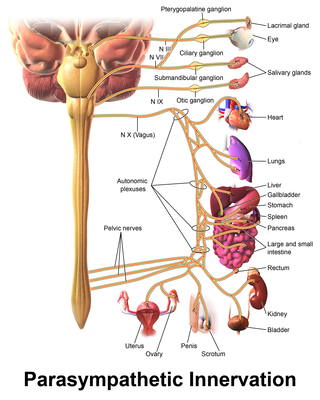Anxiety
Conquer Anxiety With This Simple but Powerful Brain Hack
Not just deep breathing: Using neuroscience to calm down and lower stress.
Posted August 9, 2022 Reviewed by Vanessa Lancaster
Key points
- The parasympathetic nervous system (PNS) returns the body to a resting state when it has been kicked into "fight, flight, or freeze" mode.
- Stimulating the vagus nerve hijacks the PNS, like hitting "ctrl-alt-delete" to do a force shut-down of a frozen acute stress response.
- While you can do this using electrical stimulation devices, employing one or more vagal maneuvers is a less invasive approach.
- Vagal maneuvers include diaphragmatic breathing and lesser-known methods such as the Valsalva maneuver and carotid sinus massage.

Deep inside our brains lies primordial circuitry designed to help us respond to danger. At the center of this circuitry is an almond-shaped structure called the amygdala, which is responsible for triggering a cascade of physiological changes.
Adrenaline and cortisol course through the bloodstream as blood pressure rises and heart rate and breathing quicken. Pupils dilate, the mouth dries, and the face pales as blood is directed to tensing muscles and core organs.
Unfortunately, the same circuitry that primed our hominid ancestors for responding to a lion jumping out of the brush now kicks off the same response in us when dealing with stressors at work, school, or home.
Traditionally known as the "fight or flight response" for its role in preparing our bodies to fight off a threat or flee from it, the term has been expanded more recently to "acute stress response" to encompass additional reactions such as freezing, appeasement, and tonic immobility. An overactive acute stress response is a characteristic of several conditions, including post-traumatic stress disorder, anxiety disorders, and bipolar disorder.

Harnessing the Power of the Vagus Nerve
The acute stress response is triggered by the body's sympathetic nervous system, while the parasympathetic nervous system is responsible for returning the body to a resting state. The main component of the parasympathetic nervous system is the vagus nerve, which conveys information from bodily organs to the brain and vice versa.
Through the vagus nerve, we can hijack the parasympathetic nervous system to bring the body back to rest. Stimulating the vagus nerve is like hitting "ctrl-alt-delete" to do a force shut-down of a frozen acute stress response. While this can be done using electrical stimulation devices, a less invasive approach is to employ one or more vagal maneuvers.
A commonly used vagal maneuver is diaphragmatic breathing. This type of breathing involves deep breaths from the diaphragm, which helps stimulate the vagus nerve and can quiet or reverse the stress response.
But deep breathing isn't the only way to stimulate the vagus nerve. Other vagal maneuvers that are not as commonly known include:
- The Valsalva maneuver. This technique requires you to try exhaling when your airways are blocked, like when you try to help balance the air pressure in your ears. However, in addition to closing your mouth and pinching your nose while trying to exhale, you bear down as if having a bowel movement for about 10 to 15 seconds. This maneuver causes rapid changes to your heart rate and blood pressure.
- The diving reflex. When submerged in cold water, the body's physiological response includes a slowing of breathing and heart rate. This can be achieved by stepping into a cold shower or bath or, less drastically, by immersing your face in icy cold water for several seconds. You may also try placing a plastic bag of ice on your face for 15 seconds.
-
The Trendelenburg position. This is the medical term for lying with your feet elevated above your head at an angle of roughly 16 degrees. There's evidence that combining the Trendelenberg position with the Valsalva maneuver may increase their effectiveness.
-
Carotid sinus massage. This one should be performed by a healthcare professional. You lie down with your neck in an extended position, and your head turned away from the side being massaged. Gentle pressure in circular motions for about 10 seconds is applied to a bundle of nerves surrounding the carotid artery just below your jaw called your carotid sinus.
Squatting, holding your breath, stimulating the gag reflex, doing a handstand, and even coughing have also been touted to stimulate the vagus nerve.
So the next time you find yourself triggered and locked into a fight, flight, or freeze mode, try one of these vagal maneuvers to hit "ctrl-alt-delete" on your frozen acute stress response.


